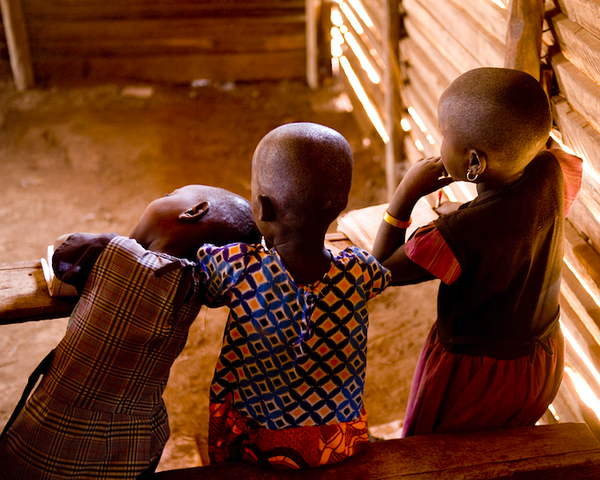
To end child poverty in Africa, we need to put children’s rights and wellbeing first during humanitarian crises, while at the same time cautioning ourselves that violence is never the solution.
It is widely acknowledged that humanitarian crises drive children into poverty or otherwise exacerbate child poverty. Reports from government organs, NGOs and various UN agencies indicate that children’s rights to be protected from violence, abuse and neglect, are massively violated when disasters and conflicts occur. Their right to live in dignity is eroded. More than that, children’s access to resources such as education, health care, transport and safe living spaces, are compromised during such humanitarian crises. Arguably, these compound deprivations force children to live in poverty.
Empirical evidence further cements these assertions. According to UNICEF, approximately 1 out of every 4 children live in countries that are plagued by humanitarian crises. In Eastern and Southern Africa alone, 17 million children are in need of humanitarian assistance due to both natural or man-made disasters and conflicts in the region. There has also been a sharp increase in the number of children on the move due to forced migration and displacement. UNHCR reports that children constitute a significant proportion of populations on the move across international borders globally. More astutely, 50% of refugees in Africa are children, with about 3 million children forced out of their origins due to various humanitarian crises.
In the wake of this year’s commemoration of the Day of the African Child, “Humanitarian Action in Africa – Children’s Rights First”, and the 30th anniversary of the UN Convention of the Right of the Child (CRC), we are keenly attuned to the confluence between children rights and humanitarian action. We believe that adherence to, and implementation of regionally and internationally agreed standards and frameworks towards child dignity, forms the blueprint towards humanitarian action for children.
The Day of the African Child came as a result of children fighting for their own rights – the Right to Education – when almost 30 years ago, the African Union instituted it in memory of the 1976 student uprising in Soweto, South Africa. At that time, students marched in protest against racial discrimination experienced in form of the poor quality of education they received. Their actions formed a pivotal moment in the fight against South Africa’s apartheid regime and its resultant injustices. In honor of these children and many more enduring deprivations and rights violations, it is imperative that we come together and uphold their dignity and wellbeing.
On the other hand, the Convention of the Right of the Child (CRC) builds a foundation through which States and other duty bearers can work together to build a better life for all children. A close look at the Convention on the Rights of the Child (CRC) offers a ray of hope to children – promising them utmost social protection.
Article 38 (1) of the CRC states that: “States Parties undertake to respect and to ensure respect for rules of international humanitarian law applicable to them in armed conflicts which are relevant to the child”. Similarly, CRC Article 39 declares: “States Parties shall take all appropriate measures to promote physical and psychological recovery and social reintegration of a child victim of: any form of neglect, exploitation, or abuse; torture or any other form of cruel, inhuman or degrading treatment or punishment; or armed conflicts. Such recovery and reintegration shall take place in an environment which fosters the health, self- respect and dignity of the child”. These articles of the CRC, put in practice, are a classic formula towards alleviating the effects of humanitarian crises through protection of the child.
For the children in Africa, these provisions, coupled with the Africa’s Children’s Charter, offer a rich framework concerning promotion of the child’s dignity, rights and wellbeing, even in the worst forms of humanitarian crises. More specifically, the African Committee of Experts on the Rights and Welfare of the Child (ACERWC), the organ which administers the Day of the African Child commemorations, prepared a 25- year roadmap, “Agenda 2040: Fostering an Africa Fit for Children”. This agenda carries with it the objective to restore the dignity of the African child through assessing the achievements and challenges faced towards the effective implementation of the African Children’s Charter, with a focus on children affected by humanitarian crises.
In addition to supporting these standards, Arigatou International also initiates programmes addressing children’s rights and child poverty. For instance, securing the right to education remains paramount regardless of context. Access to education and learning helps children cope with the trauma of humanitarian disasters, enabling them to build resilience and provides them with some form of stability. Good quality education, with its content focused on children’s development, prepares children for productive adulthood and provides them with practical skills to enhance their protection and survival. Arigatou International – End Child Poverty therefore supports education programmes for children affected by conflict and humanitarian crises in Africa and other regions, as a way to safeguard their wellbeing and end poverty.
It is through such institutional provisions, rights-based legal frameworks, and political and social actions, that we can build the impetus to strengthen child protection systems and take robust humanitarian action for the welling children in Africa.